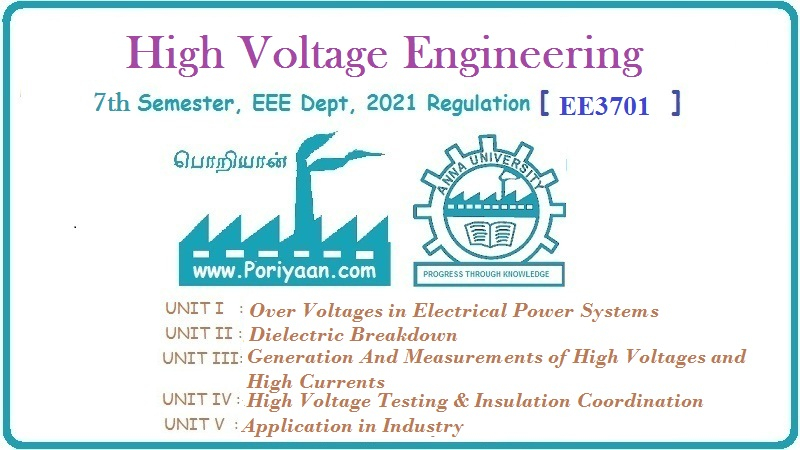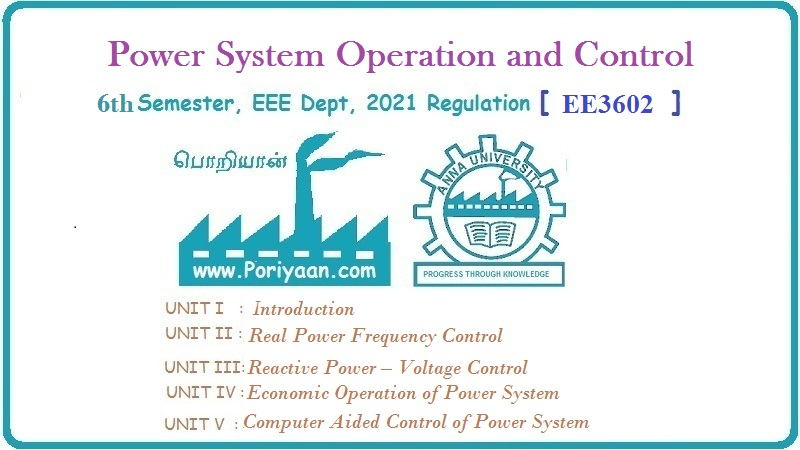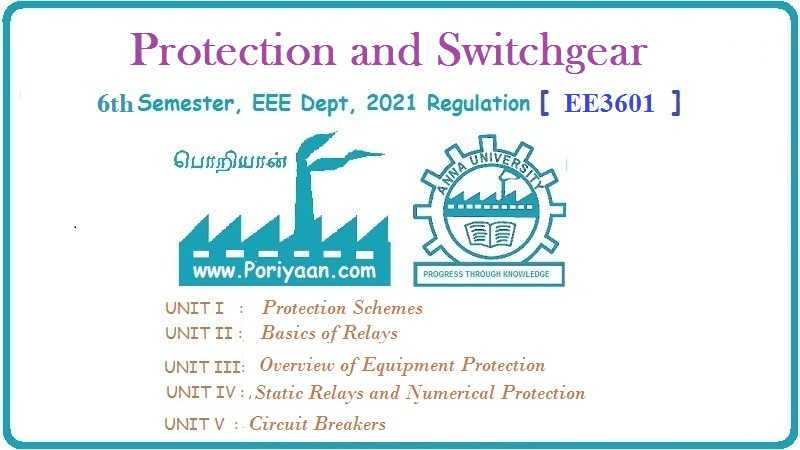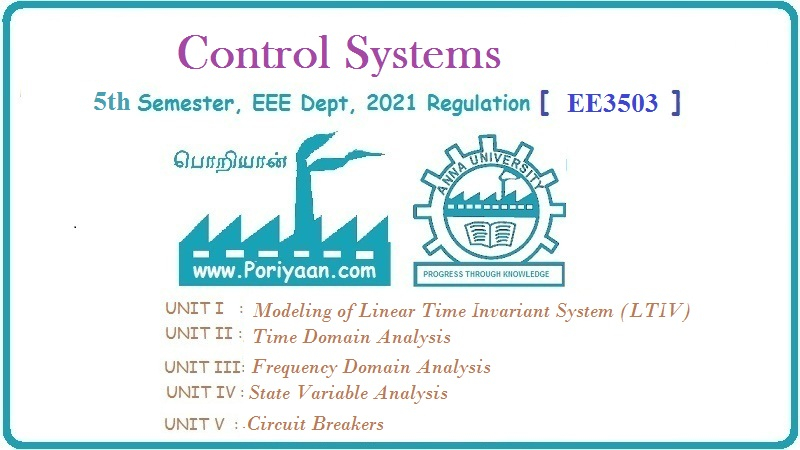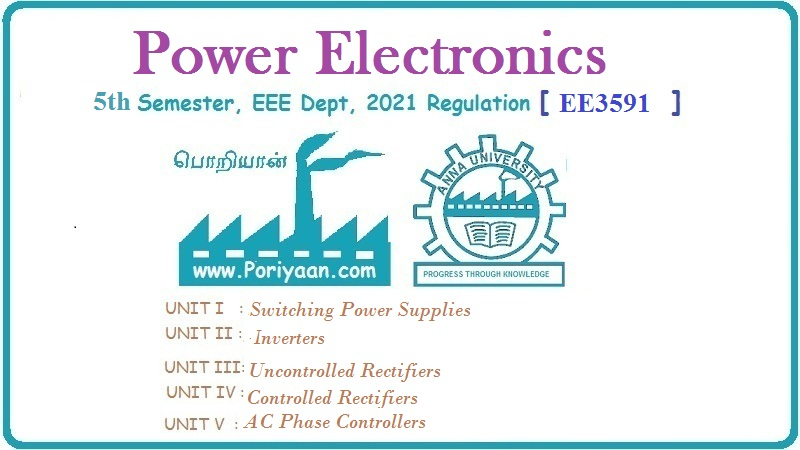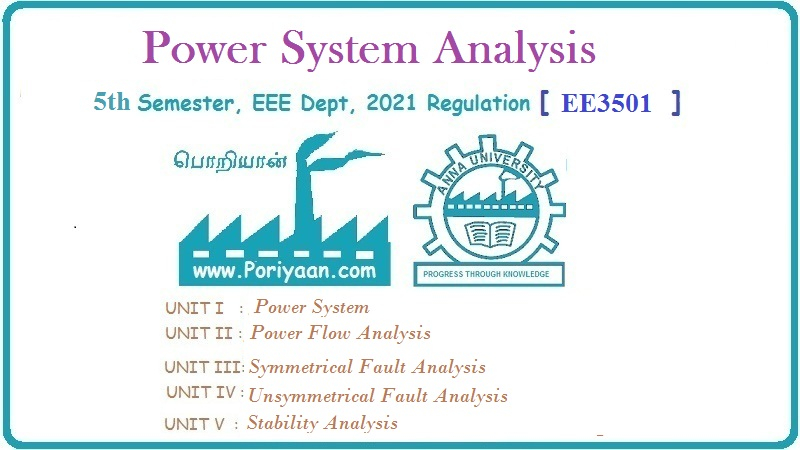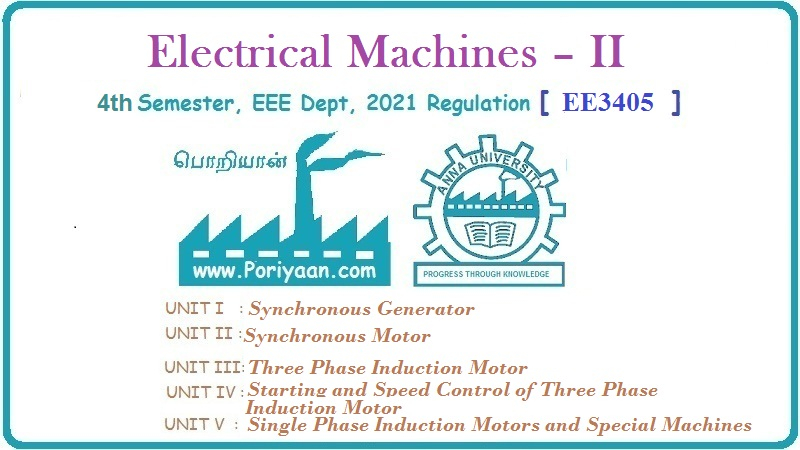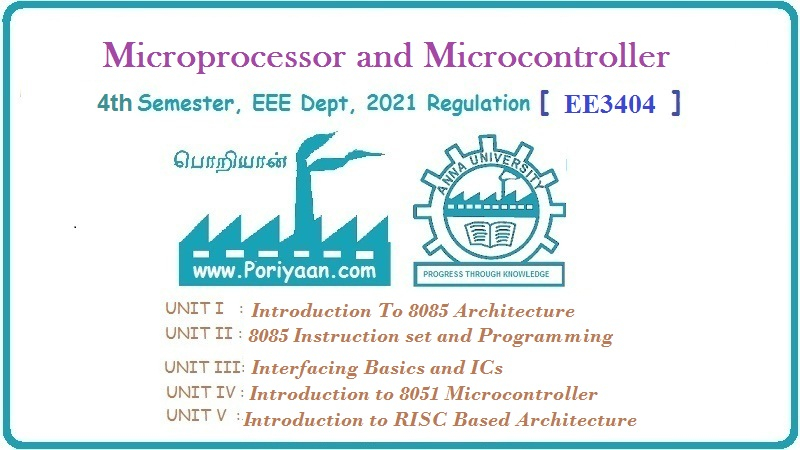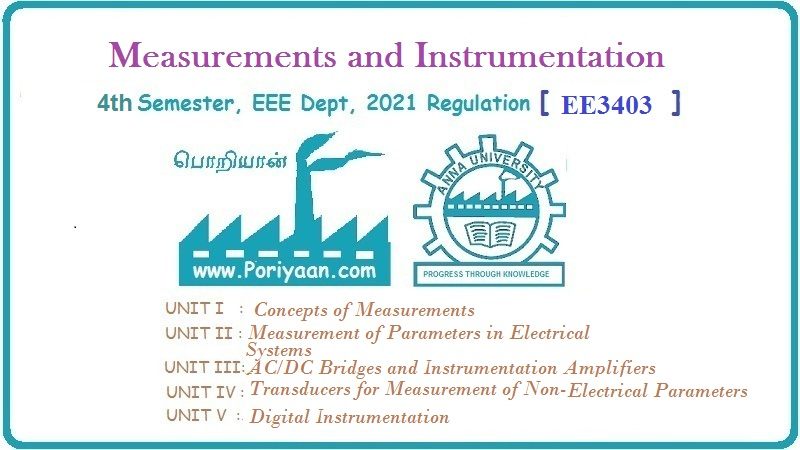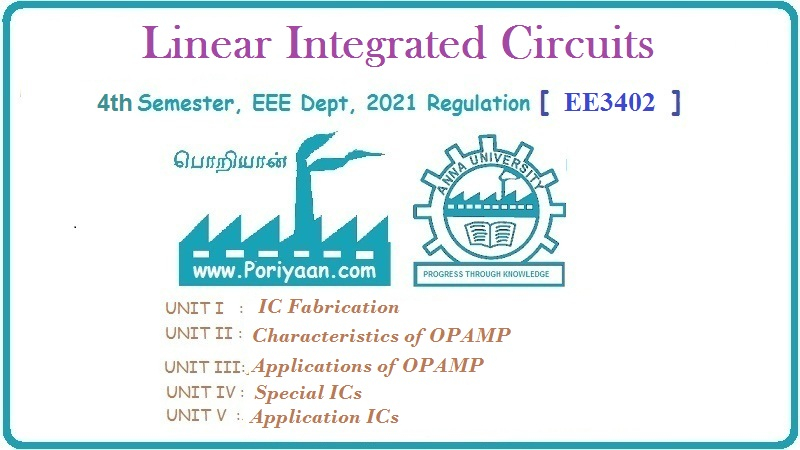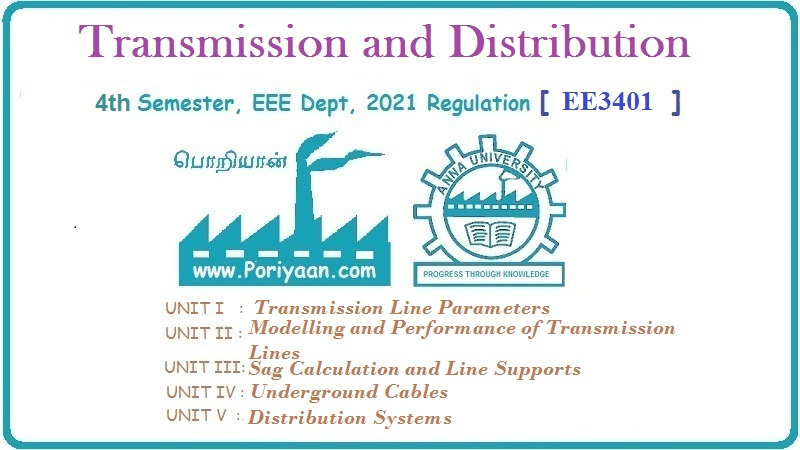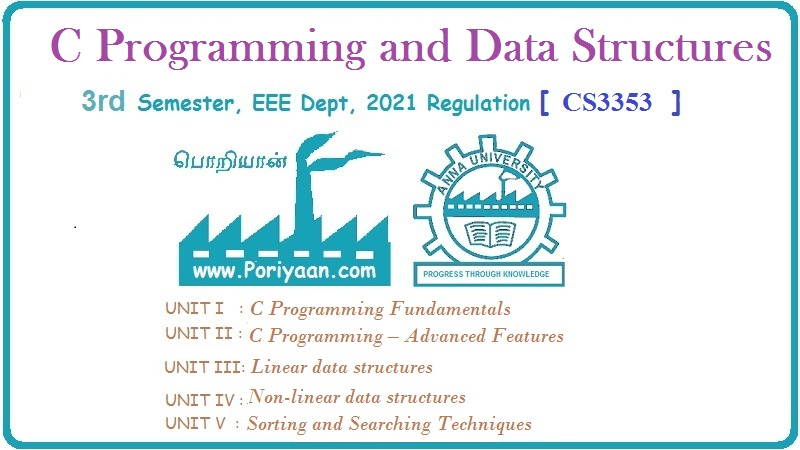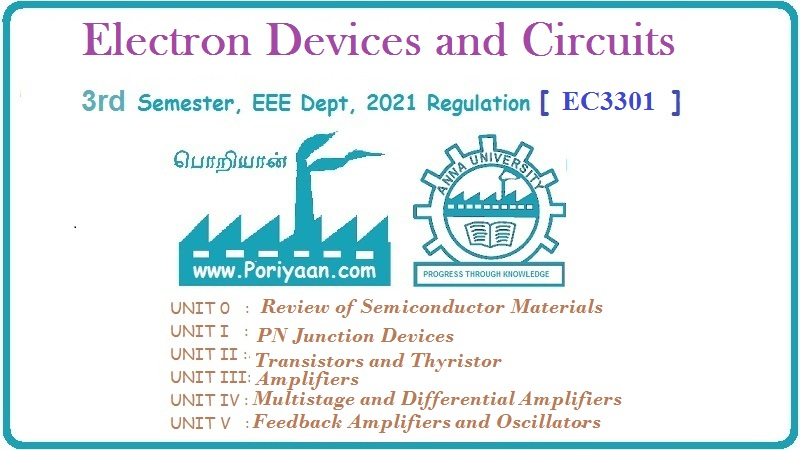Digital Logic Circuits
EE3302 3rd Semester EEE Dept | 2021 Regulation

2021 regulation - 2nd year, 3rd semester paper for EEE Department (Electrical and Electronics Engineering Department). Subject Code: EE3302, Subject Name: Digital Logic Circuits, Batch: 2021, 2022, 2023, 2024. Institute: Anna University Affiliated Engineering College, TamilNadu. This page has Digital Logic Circuits study material, notes, semester question paper pdf download, important questions, lecture notes.
PDF Download Links
- EE3302 Digital Logic Circuits Reg 2017 Apr May 2019 Question Paper
- EE3302 Digital Logic Circuits Reg 2017 Apr May 2019 Question Paper
- EE3302 Digital Logic Circuits Reg 2017 Apr May 2019 Question Paper
- EE3302 Digital Logic Circuits Reg 2017 Apr May 2019 Question Paper
- EE3302 Digital Logic Circuits Reg 2017 Apr May 2019 Question Paper
- EE3302 Digital Logic Circuits Reg 2017 Nov Dec 2020 Question Paper
- EE3302 Digital Logic Circuits Reg 2013 Apr May 2019 Question Paper
- EE3302 Digital Logic Circuits Reg 2013 Nov Dec 2019 Question Paper
- EE3302 Digital Logic Circuits Reg 2013 Apr May 2018 Question Paper
- EE3302 Digital Logic Circuits Reg 2013 Nov Dec 2018 Question Paper
- EE3302 Digital Logic Circuits Reg 2013 Nov Dec 2020 Question Paper
Digital Logic Circuits
- Number Systems
- Review of Number Systems
- Representation of Number of Different Radix
- Conversion of Numbers from One Radix to Another Radix
- Complements
- Signed Binary Numbers
- Binary Arithmetic
- Binary Codes
- Error Detection and Correction Codes
- Two Marks Questions with Answers
- University Questions with Answers (Long Answered Questions)
- Digital Logic Families
- Introduction
- Characteristics of Digital Logic Families
- Resistor - Transistor Logic (RTL)
- Diode - Transistor Logic (DTL)
- Transistor Transistor Logic (TTL)
- MOS Families
- ECL Family
- Comparison between TTL, CMOS and ECL Families
- Comparison between Various Digital Logic Families
- Two Marks Questions with Answers
- University Questions with Answers (Long Answered Questions)
- Combinational Circuits
- Boolean Algebra
- Representation of Logic Functions - SOP and POS Forms
- Karnaugh Map (K-map) Representation and Minimization using K-maps
- Minimization of SOP Expressions
- Minimization of POS Expressions
- Five-Variable K-map
- Six-Variable K-map
- Limitations of K-maps
- Implementation of Logic Functions using Logic Gates
- Introduction to Combinational Logic Circuit
- Adders
- Subtractors
- Parallel Adder
- Parallel Subtractor
- Parallel Adder/Subtractor
- BCD Adder
- Multiplexers
- Demultiplexers
- Decoder
- Encoder
- Code Converters
- Two Marks Questions with Answers
- University Questions with Answers (Long Answered Questions)
- Flip-Flops
- Introduction to Sequential Logic Circuit
- SR Flip-Flop
- D Flip-Flop
- Clocked JK Flip-Flop
- Master-Slave JK Flip-Flop
- Flip-Flop
- Asynchronous or Direct Inputs
- Various Representation of Flip-Flops
- Realization of One Flip-Flop using Other Flip-Flop
- Two Marks Questions with Answers
- University Questions with Answers (Long Answered Questions)
- Analysis & Design of Synchronous Sequential Circuits
- Comparison between Synchronous and Asynchronous Sequential Circuits
- Clocked Sequential Circuits
- Analysis of Clocked Sequential Circuits
- Design of Clock Sequential Circuits: State Reduction
- Design of Clock Sequential Circuits: State Assignment, Derivation of State
- Counters
- Ripple / Asynchronous Counters
- Design of Ripple (Asynchronous) Counters
- Synchronous Counters
- Design of Synchronous Counters
- Sequence Detector
- Two Marks Questions with Answers
- University Questions with Answers (Long Answered Questions)
- Shift Registers
- Buffer and Controlled Buffer Register
- Shift Registers
- Types of Shift Registers
- Universal Shift Register
- Applications of Shift Registers
- Ring Counters
- Johnson or Twisting Ring or Switch Tail Counter
- Two Marks Questions with Answers
- University Questions with Answers (Long Answered Questions)
- Asynchronous Sequential Circuits
- Introduction
- Types of Asynchronous Circuits
- Analysis of Pulse Mode Asynchronous Circuits
- Design of Pulse Mode Circuit
- Analysis of Fundamental Mode Sequential Circuits
- Design of Fundamental Mode Sequential Circuits
- Examples Problems for Understanding
- Two Marks Questions with Answers
- University Questions with Answers (Long Answered Questions)
- Introduction to Programmable Logic Devices
- Design approaches for digital circuits
- PROM (Programmable Read Only Memory)
- PLA (Programmable Logic Array)
- PAL (Programmable Array Logic)
- Comparison between PROM, PLA and PAL
- CPLD (Complex Programmable Logic Devices)
- FPGA (Field Programmable Gate Arrays)
- Comparison between CPLDs and FPGAs
- Two Marks Questions with Answers
- University Questions with Answers (Long Answered Questions)
- VHDL
- Introduuction to HDL
- Structure of VHDL Module
- Styles of Modeling
- VHDL Identifiers and Types
- VHDL Data Objects
- VHDL Data Types and Operators
- Structure of Behavioral Description
- Structure of Data Flow Description
- Organization of Structuural Description
- Subprograms
- Declaration of Subprogram
- Subprogram Overloading
- Examples of Procedure and Functions
- VHDL Description of Flip-Flops
- VHDL Description for Counters
- VHDL Code for Registers
- VHDL Description for Finite State Machines (FSM)
- Memory Description in VHDL
- RTL Design
- RTL Design using VHDL with example
- Testbenches
- Two Marks Questions with Answers
- University Questions with Answers (Long Answered Questions)
- DLC Solved Semester Question Paper 2014 Dec (2013 Reg)
- DLC Solved Semester Question Paper 2015 May (2013 Reg)
- DLC Solved Semester Question Paper 2015 Dec (2013 Reg)
- DLC Solved Semester Question Paper 2016 May (2013 Reg)
- DLC Solved Semester Question Paper 2016 May (2013 Reg)
- DLC Solved Semester Question Paper 2017 May (2013 Reg)
- DLC Solved Semester Question Paper 2017 Dec (2013 Reg)
- DLC Solved Semester Question Paper 2018 Dec (2017 Reg)
PDF Download Links
- EE3302 Digital Logic Circuits Reg 2017 Apr May 2019 Question Paper
- EE3302 Digital Logic Circuits Reg 2017 Apr May 2019 Question Paper
- EE3302 Digital Logic Circuits Reg 2017 Apr May 2019 Question Paper
- EE3302 Digital Logic Circuits Reg 2017 Apr May 2019 Question Paper
- EE3302 Digital Logic Circuits Reg 2017 Apr May 2019 Question Paper
- EE3302 Digital Logic Circuits Reg 2017 Nov Dec 2020 Question Paper
- EE3302 Digital Logic Circuits Reg 2013 Apr May 2019 Question Paper
- EE3302 Digital Logic Circuits Reg 2013 Nov Dec 2019 Question Paper
- EE3302 Digital Logic Circuits Reg 2013 Apr May 2018 Question Paper
- EE3302 Digital Logic Circuits Reg 2013 Nov Dec 2018 Question Paper
- EE3302 Digital Logic Circuits Reg 2013 Nov Dec 2020 Question Paper
Digital Logic Circuits
Unit I: (a) Number Systems
- Number Systems
- Review of Number Systems
- Representation of Number of Different Radix
- Conversion of Numbers from One Radix to Another Radix
- Complements
- Signed Binary Numbers
- Binary Arithmetic
- Binary Codes
- Error Detection and Correction Codes
- Two Marks Questions with Answers
- University Questions with Answers (Long Answered Questions)
Unit I: (b) Digital Logic Families
- Digital Logic Families
- Introduction
- Characteristics of Digital Logic Families
- Resistor - Transistor Logic (RTL)
- Diode - Transistor Logic (DTL)
- Transistor Transistor Logic (TTL)
- MOS Families
- ECL Family
- Comparison between TTL, CMOS and ECL Families
- Comparison between Various Digital Logic Families
- Two Marks Questions with Answers
- University Questions with Answers (Long Answered Questions)
Unit II: Combinational Circuits
- Combinational Circuits
- Boolean Algebra
- Representation of Logic Functions - SOP and POS Forms
- Karnaugh Map (K-map) Representation and Minimization using K-maps
- Minimization of SOP Expressions
- Minimization of POS Expressions
- Five-Variable K-map
- Six-Variable K-map
- Limitations of K-maps
- Implementation of Logic Functions using Logic Gates
- Introduction to Combinational Logic Circuit
- Adders
- Subtractors
- Parallel Adder
- Parallel Subtractor
- Parallel Adder/Subtractor
- BCD Adder
- Multiplexers
- Demultiplexers
- Decoder
- Encoder
- Code Converters
- Two Marks Questions with Answers
- University Questions with Answers (Long Answered Questions)
Unit III: (a) Flip-Flops
- Flip-Flops
- Introduction to Sequential Logic Circuit
- SR Flip-Flop
- D Flip-Flop
- Clocked JK Flip-Flop
- Master-Slave JK Flip-Flop
- Flip-Flop
- Asynchronous or Direct Inputs
- Various Representation of Flip-Flops
- Realization of One Flip-Flop using Other Flip-Flop
- Two Marks Questions with Answers
- University Questions with Answers (Long Answered Questions)
Unit III: (b) Analysis & Design of Synchronous Sequential Circuits
- Analysis & Design of Synchronous Sequential Circuits
- Comparison between Synchronous and Asynchronous Sequential Circuits
- Clocked Sequential Circuits
- Analysis of Clocked Sequential Circuits
- Design of Clock Sequential Circuits: State Reduction
- Design of Clock Sequential Circuits: State Assignment, Derivation of State
- Counters
- Ripple / Asynchronous Counters
- Design of Ripple (Asynchronous) Counters
- Synchronous Counters
- Design of Synchronous Counters
- Sequence Detector
- Two Marks Questions with Answers
- University Questions with Answers (Long Answered Questions)
Unit III: (c) Shift Registers
- Shift Registers
- Buffer and Controlled Buffer Register
- Shift Registers
- Types of Shift Registers
- Universal Shift Register
- Applications of Shift Registers
- Ring Counters
- Johnson or Twisting Ring or Switch Tail Counter
- Two Marks Questions with Answers
- University Questions with Answers (Long Answered Questions)
Unit IV: (a) Asynchronous Sequential Circuits
- Asynchronous Sequential Circuits
- Introduction
- Types of Asynchronous Circuits
- Analysis of Pulse Mode Asynchronous Circuits
- Design of Pulse Mode Circuit
- Analysis of Fundamental Mode Sequential Circuits
- Design of Fundamental Mode Sequential Circuits
- Examples Problems for Understanding
- Two Marks Questions with Answers
- University Questions with Answers (Long Answered Questions)
Unit IV: (b) Hazards and Errors in Digital Circuits
Unit IV: (c) Introduction to Programmable Logic Devices
- Introduction to Programmable Logic Devices
- Design approaches for digital circuits
- PROM (Programmable Read Only Memory)
- PLA (Programmable Logic Array)
- PAL (Programmable Array Logic)
- Comparison between PROM, PLA and PAL
- CPLD (Complex Programmable Logic Devices)
- FPGA (Field Programmable Gate Arrays)
- Comparison between CPLDs and FPGAs
- Two Marks Questions with Answers
- University Questions with Answers (Long Answered Questions)
Unit V: VHDL
- VHDL
- Introduuction to HDL
- Structure of VHDL Module
- Styles of Modeling
- VHDL Identifiers and Types
- VHDL Data Objects
- VHDL Data Types and Operators
- Structure of Behavioral Description
- Structure of Data Flow Description
- Organization of Structuural Description
- Subprograms
- Declaration of Subprogram
- Subprogram Overloading
- Examples of Procedure and Functions
- VHDL Description of Flip-Flops
- VHDL Description for Counters
- VHDL Code for Registers
- VHDL Description for Finite State Machines (FSM)
- Memory Description in VHDL
- RTL Design
- RTL Design using VHDL with example
- Testbenches
- Two Marks Questions with Answers
- University Questions with Answers (Long Answered Questions)
Solved Paper
- DLC Solved Semester Question Paper 2014 Dec (2013 Reg)
- DLC Solved Semester Question Paper 2015 May (2013 Reg)
- DLC Solved Semester Question Paper 2015 Dec (2013 Reg)
- DLC Solved Semester Question Paper 2016 May (2013 Reg)
- DLC Solved Semester Question Paper 2016 May (2013 Reg)
- DLC Solved Semester Question Paper 2017 May (2013 Reg)
- DLC Solved Semester Question Paper 2017 Dec (2013 Reg)
- DLC Solved Semester Question Paper 2018 Dec (2017 Reg)
PDF Download Links
- EE3302 Digital Logic Circuits Reg 2017 Apr May 2019 Question Paper
- EE3302 Digital Logic Circuits Reg 2017 Apr May 2019 Question Paper
- EE3302 Digital Logic Circuits Reg 2017 Apr May 2019 Question Paper
- EE3302 Digital Logic Circuits Reg 2017 Apr May 2019 Question Paper
- EE3302 Digital Logic Circuits Reg 2017 Apr May 2019 Question Paper
- EE3302 Digital Logic Circuits Reg 2017 Nov Dec 2020 Question Paper
- EE3302 Digital Logic Circuits Reg 2013 Apr May 2019 Question Paper
- EE3302 Digital Logic Circuits Reg 2013 Nov Dec 2019 Question Paper
- EE3302 Digital Logic Circuits Reg 2013 Apr May 2018 Question Paper
- EE3302 Digital Logic Circuits Reg 2013 Nov Dec 2018 Question Paper
- EE3302 Digital Logic Circuits Reg 2013 Nov Dec 2020 Question Paper

EE3302
DIGITAL LOGIC CIRCUITS
COURSE OBJECTIVES:
•
To introduce the fundamentals of combinational and sequential digital circuits.
•
To study various number systems and to simplify the mathematical expressions
using Boolean functions word problems
•
To study implementation of combinational circuits using Gates' and MSI Devices.
•
To study the design of various synchronous and asynchronous circuits
•
To introduce digital simulation techniques for development of application
oriented logic circuit
UNIT I
NUMBER SYSTEMS AND DIGITAL LOGIC FAMILIES
Number
system, error detection, corrections & codes conversions, Boolean algebra:
De- Morgan's theorem, switching functions and minimization using K-maps &
Quine McCluskey method - Digital Logic Families -comparison of RTL, DTL, TTL,
ECL and MOS families - operation, characteristics of digital logic family.
UNIT II
COMBINATIONAL CIRCUITS
Combinational
logic - representation of logic functions-SOP and POS forms, K-map
representations - minimization using K maps - simplification and implementation
of combinational logic - multiplexers and de multiplexers code converters,
adders, subtractors, Encoders and Decoders.
UNIT III
SYNCHRONOUS SEQUENTIAL CIRCUITS
Sequential
logic- SR, JK, D and T flip flops - level triggering and edge triggering -
counters - asynchronous and synchronous type Modulo counters - Shift registers
design of synchronous sequential circuits - Moore and Mealy models- Counters,
state diagram; state reduction; state assignment.
UNIT IV
ASYNCHRONOUS SEQUENTIAL CIRCUITS AND PROGRAMMABILITY LOGIC
DEVICES
Asynchronous
sequential logic Circuits-Transition stability, flow stability-race conditions,
hazards &errors in digital circuits; analysis of asynchronous sequential
logic circuits- introduction to Programmability Logic Devices: PROM - PLA-PAL,
CPLD-FPGA.
UNIT V
VHDL
UNL
Design combinational logic - Sequential circuit - Operators - Introduction to Packages
- Subprograms - Test bench. (Simulation /Tutorial Examples: adders, counters,
flip flops, Multiplexers & De multiplexers).
TOTAL:
45 PERIODS
Course Outcomes:
Upon
the successful completion of the course, students will be able to:
CO1:
Explain various number systems and characteristics of digital logic families
CO2:
Apply K-maps and Quine McCluskey methods to simplify the given Boolean expressions
CO3:
Explain the implementation of combinational circuit such as multiplexers and de
multiplexers - code converters, adders, subtractors, Encoders and Decoders
CO4:
Design various synchronous and asynchronous circuits using Flip Flops
CO5:
Explain asynchronous sequential circuits and programmable logic devices
CO6:
Use VHDL for simulating and testing RTL, combinatorial and sequential circuits
TEXTBOOKS:
1.
Morris Mano.M, 'Digital Logic and Computer Design', Prentice Hall of India, 3rd
Edition, 2005.
2.
Donald D.Givone, 'Digital Principles and Design', Tata McGraw Hill, 1st
Edition, 2003
3.
Thomas L Floyd, 'Digital fundamentals', Pearson Education Limited, 11th
Edition, 2018
TEXTBOOKS:
1.
Morris Mano.M, 'Digital Logic and Computer Design', Prentice Hall of India, 3rd
Edition, 2005.
2.
Donald D.Givone, 'Digital Principles and Design', Tata McGraw Hill, 1st
Edition, 2003
3.
Thomas L Floyd, 'Digital fundamentals', Pearson Education Limited, 11th
Edition, 2018
REFERENCES:
1.
Tocci R.J., Neal S. Widmer, 'Digital Systems: Principles and Applications',
Pearson Education Asia, 12th Edition, 2017.
2.
Donald P Leach, Albert Paul Malvino, Goutam Sha, 'Digital Principles and
Applications', Tata McGraw Hill, 7th Edition, 2010.
Digital Logic Circuits: Unit I: (a) Number Systems,, Digital Logic Circuits: Unit I: (b) Digital Logic Families,, Digital Logic Circuits: Unit II: Combinational Circuits,, Digital Logic Circuits: Unit III: (a) Flip-Flops,, Digital Logic Circuits: Unit III: (b) Analysis & Design of Synchronous Sequential Circuits,, Digital Logic Circuits: Unit III: (c) Shift Registers,, Digital Logic Circuits: Unit IV: (a) Asynchronous Sequential Circuits,, Digital Logic Circuits: Unit IV: (b) Hazards and Errors in Digital Circuits,, Digital Logic Circuits: Unit IV: (c) Introduction to Programmable Logic Devices,, Digital Logic Circuits: Unit V: VHDL,, Digital Logic Circuits: Solved Paper 3rd Semester EEE Dept 2021 Regulation : EE3302 3rd Semester EEE Dept | 2021 Regulation Digital Logic Circuits
